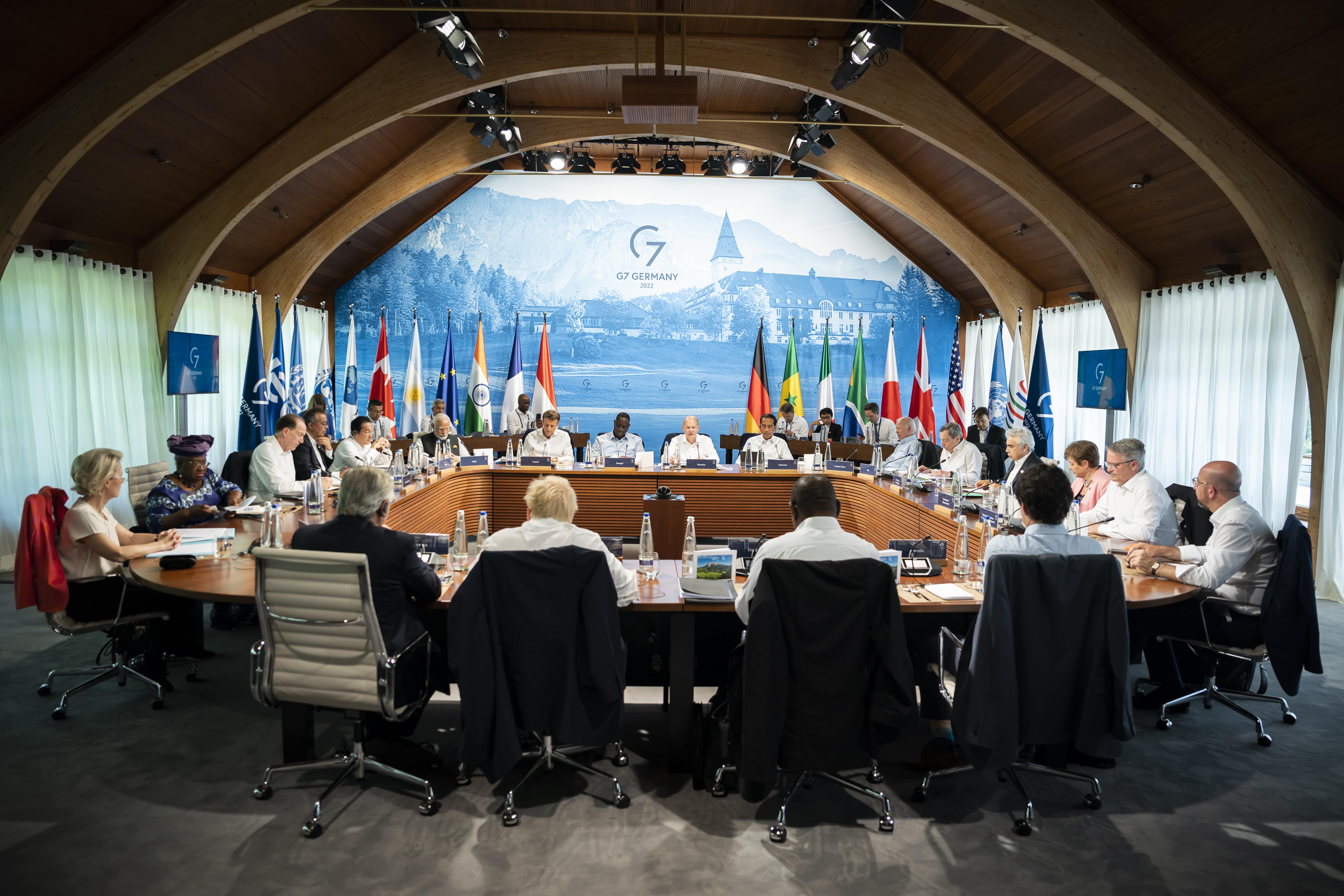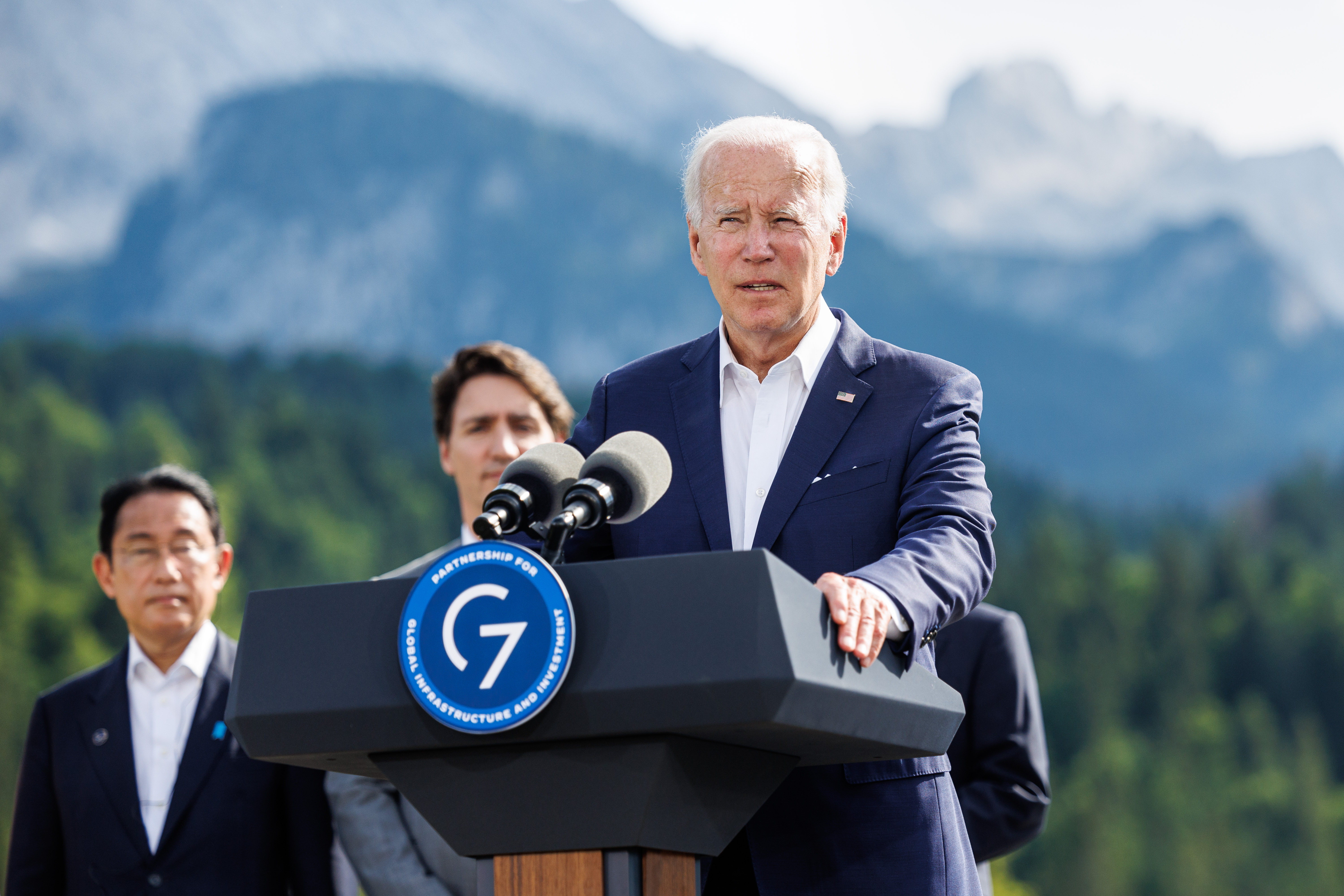The informal group of seven developed nations known as the Group of Seven (G7) held their annual meeting this year in the mountain resort of Schloss Elmau in Germany between June 26-28, 2022.
Along with the heads of state from G7 members Britain, Canada, France, Germany, Italy, Japan, and the United States, the summit was also attended by the leaders of Argentina, India, Indonesia, Senegal, and South Africa. The president of Ukraine also attended the meeting in a virtual format.
This year’s G7 meeting concluded with a joint communique that addressed a number of issues, including the need to secure sustainable energy sources, improve food security around the world, cooperate on pandemic preparedness, and a renewed vow to implement the Paris Agreement to combat climate change.
The communique stated that G7 member nations are committed to “urgent, ambitious, and inclusive action in this decade” to limit global warming to 1.5°C, in line with the 2030 UN Sustainable Development Goals, however many environmental activists felt that the commitments fell far short of what is needed.
The joint communique focused on the “importance of driving deep decarbonization” through the mechanism of developed nations adhering to their Nationally-Determined Contributions (NDCs) of carbon dioxide. The plan outlined in the communique includes a “significant increase” in the number of zero-emission light duty vehicles, including public transportation vehicles, as well as a push towards “alternative fuels” for transportation. Despite this pledge, the G7 leaders did agree to continue investing in fossil fuels, especially liquefied natural gas, in order to maintain energy security.
Resilient Democracies and Food Security
The G7 attendees also signed the 2022 Resilient Democracies Statement which is a commitment to work towards “equitable, inclusive, and sustainable solutions” to global challenges, including the Covid-19 pandemic and climate change.

The statement heavily emphasized the need to remain steadfast to the rules-based international order and the principles enshrined in the UN order so as to support the peaceful resolution of conflicts and the development of technologies to benefit humanity. The statement also called on members to defend public debate and independent media, including protecting freedom of expression online while combating “hybrid threats” such as disinformation and information manipulation.
The G7 Statement on Global Food Security was a separate document signed by attendees that noted that members have “grave concern” over a UN report that up to 323 million people will become acutely food insecure or are at high risk. In response to this, members pledged to build a Global Alliance for Food Security in conjunction with the World Bank to fund regional outreach initiatives, particularly those focused on helping African countries.
In total, members pledged $4.5 billion this ear to protect vulnerable populations from hunger and malnutrition by sustainably increasing the availability of commercial agricultural fertilizers and promoting alternatives to petroleum-based fertilizers. The statement also called on countries to reduce food prices by avoiding “excessive stockpiling of food” and reducing food waste.
The Partnership for Global Infrastructure and Investment
Perhaps the biggest news to come out of this year’s G7 meeting was the announcement of the creation of the Partnership for Global Infrastructure and Investment (PGII) which is seeking to “mobilize” up to $600 billion in capital by 2027 to fund infrastructure projects. U.S. President Biden stated that the United States will seek to acquire $200 billion in funding for the PGII over the next five years from both public and private sources.

According to the announcement, $40 trillion is needed to help the developing world build the infrastructure needed to improve quality of life, combat climate change, and fuel economic growth. The four key priorities of the PGII will be tackling climate and energy security needs, improving digital connectivity, increasing health security, and promoting gender equality and equity. There was also a heavy emphasis on improving financial transparency in infrastructure development programs.
The PGII is an effort to relaunch a similar program to provide infrastructure funds to developing countries agreed to at the 2021 G7 Meeting in Cornwall, England, entitled the “Build Back Better World” program that simply failed in its goal to begin mobilizing $300 billion in funding by 2027. This year, however, the emphasis is on providing an alternative to China’s Belt and Road Initiative (BRI), which has provided more than $60 billion a year over the past nine years in funding infrastructure projects in the developing world, a program that Japanese Prime Minister Fumio Kishida called “unfair and opaque” at the conclusion of this year’s G7 meeting.
The first meeting of what would become the Group of Seven (G7) was held in 1975 and was attended by the leaders of just six countries (Canada would join a year later), a meeting that quickly became an annual tradition. From 1997-2014, the meetings were known as the Group of Eight (G8) when Russia was a member. The next G7 meeting will take place in Japan in 2023.

